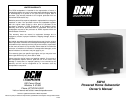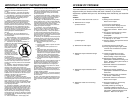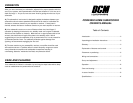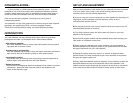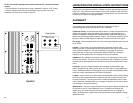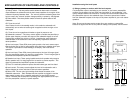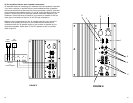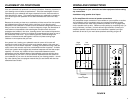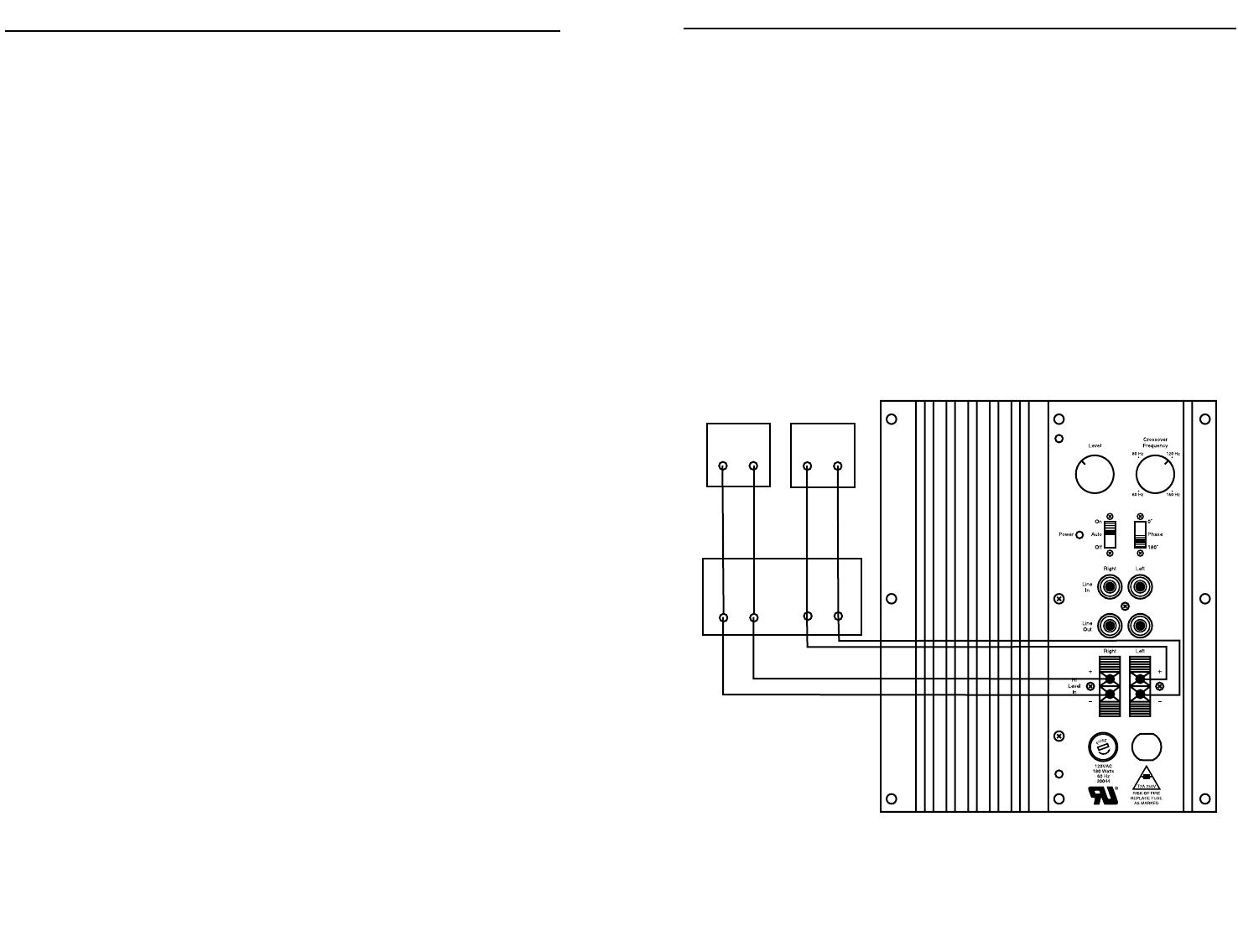
PLACEMENT OR POSITIONING
Your new subwoofer will work well in a variety of locations. However, placement in
your listening room will affect its performance. Since the wavelengths of sound
reproduced by your subwoofer are large compared to its size, those sounds are
omni-directional in nature. This means that locating your subwoofer in relation to
your left and right main speakers will not affect the directional cues which they
provide.
Because the sounds you hear are a combination of direct sound from the speaker
and reflected sound from the walls, ceiling, and floor of your listening room,
placement of the subwoofer in relation to room boundaries changes the balance of
what you hear at low frequencies. In that low frequency range, the dimensions of
most rooms are comparable to the wavelengths of those sounds. As sound
propagates and reflects in the room, “standing waves” are created at frequencies
where the wavelength of sound or multiples of the wavelength are equal to one of
the dimensions of the room. At your listening position, these standing wave
patterns of reflected sound add together in and out of phase causing large
variations in the response that you hear.
As a general rule, locating your subwoofer near the corner of the room will
increase its overall output, but will excite more standing waves in the room and
may result in a more uneven response. Locating your subwoofer along a wall will
usually mean less acoustic output but a somewhat smoother response. A middle
of the room location would suggest the smoothest response with the least output
capability. Of course, any location will be a compromise between acoustic
performance and the aesthetic blend of the subwoofer enclosure with the decor
and furnishings of your room. Don’t be afraid to experiment with the location of
your subwoofer in your room for the best results at your listening position. As with
any other listening test, use program material that you are familiar with that has
substantial bass content.
7
WIRING AND CONNECTIONS
Turn off all power to your subwoofer and other equipment before making
any connections.
Installation using speaker level inputs
A) For amplifiers with one set of speaker connections.
If a preamplifier output connection is not available on your amplifier or receiver,
your subwoofer can be connected using your equipment’s speaker outputs.
These connections are made using commonly available 18 or 16 gauge lamp
cord or speaker hook-up wire. Observe correct polarity by connecting red(+) to
red(+) and black(-) to black(-) for both left and right channels. Connect your
amplifiers speaker output terminals to the subwoofer’s speaker level input
terminals as well as to your main stereo speakers according to figure B.
FIGURE B
R
- +
L
+
-
- +
Right
Speaker
Left
Speaker
Receiver
or
Power Amplifier
+ -
6



